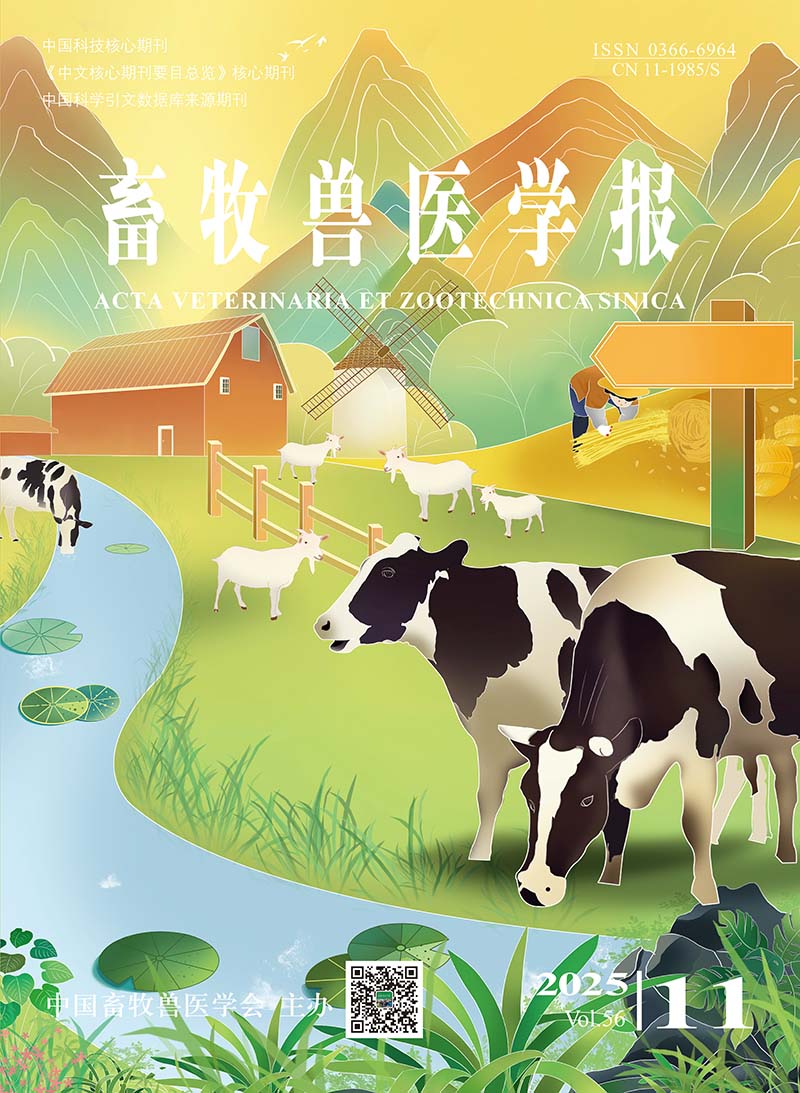This experiment was conducted to study the effects of ammonia and hydrogen sulfide stress on immunity and antioxidant function of goats. Eight young female goats were randomly divided into two groups, and each group had 4 replicates. The goats were in the separated environmental controlled chamber A and B processed by the following treatments successively. Chamber A:control group (0-6 d):3 mg·m-3NH3+0 mg·m-3H2S; treatment 1 (T1) (8-13 d):20 mg·m-3NH3+8 mg·m-3H2S; treatment 2 (T2) (15-20 d):40 mg·m-3NH3+8 mg·m-3H2S; treatment 3 (T3) (22-27 d):80 mg·m-3NH3+8 mg·m-3H2S. Chamber B:treatment 4 (T4) (8-13 d):20 mg·m-3NH3+16 mg·m-3H2S; treatment 5 (T5) (15-20 d):40 mg·m-3NH3+16 mg·m-3H2S; treatment 6 (T6) (22-27 d):80 mg·m-3NH3+16 mg·m-3H2S. The serum samples of goats were collected at 2nd and 6th day of each experiment which lasted for 6 days, then the immune indexes (immunoglobulin, complement, lysozyme and cytokine content) and antioxidant indexes (T-AOC, antioxidant enzyme activity and MDA content) were measured. The results showed as follows:1) Compared with the control group, serum IL-1β content in T3, T4 significantly increased (P<0.05), and serum IL-6 content in T4, T6 significantly increased (P<0.01) at the 2nd day; contents of serum IgA, IgG, IgM, LZM, C3 and C4 significantly decreased (P<0.01) in the treatments (except T1) and serum IL-1β content significantly increased (P<0.05) in T4 at the 6th day. H2S concentration had the significant influence on the contents of serum LZM (P<0.05), IL-10 (P<0.05), IL-6 (P<0.01) at the 2nd day, and the contents of serum IL-1β (P<0.05), IgG (P<0.01), IgM (P<0.01), IL-10 (P<0.01), C3 (P<0.01), C4 (P<0.05) at the 6th day. With the increase of time in climate chambers, contents of serum IgG, IgM, C3, C4 decreased. NH3 and H2S concentrations had the significant interaction effect on contents of serum IL-1β (P<0.05), IgG (P<0.01), IL-6 (P<0.01) at the 2nd day and IL-1β (P<0.05) at the 6th day. 2) Compared with the control group, the activities of serum SOD in T3, T4, T5, T6 and CAT in T4, T5, T6 significantly decreased (P<0.01) at the 2nd day; at the 6th day, the activities of serum SOD, CAT in the treatments (except T1) significantly decreased (P<0.01), the activity of serum T-AOC in T5 significantly decreased (P<0.05), as well as the serum level of MDA significantly increased (P<0.01) in T4, T5, T6. H2S concentration had the significant influence on the activities of serum GSH-Px (P<0.05), SOD (P<0.01), CAT (P<0.01) and MDA content (P<0.05) at the 2nd day, and the activities of serum T-AOC (P<0.01), SOD (P<0.01), CAT (P<0.01), MDA content (P<0.01) at the 6th day. NH3 concentration also had the significant influence on the activities of serum SOD (P<0.05), CAT (P<0.05) at the 2nd day, and the activities of serum SOD (P<0.01), CAT (P<0.01) at the 6th day. With the increase of time in climate chambers, the activities of serum SOD, CAT decreased. NH3 and H2S concentrations had the significant interaction effect on the activities of serum T-AOC (P<0.05), SOD (P<0.01), CAT (P<0.01), GSH-Px (P<0.01) at the 2nd day, and the activities of serum SOD (P<0.01), CAT (P<0.01) at the 6th day. It is concluded that NH3 and H2S could cause stress in goats and reduced the immune function and antioxidant capacity of goats. Furthermore, with the increase of NH3 and H2S concentrations and the prolongation of the action time, the degree of damage to the goats became worse.






